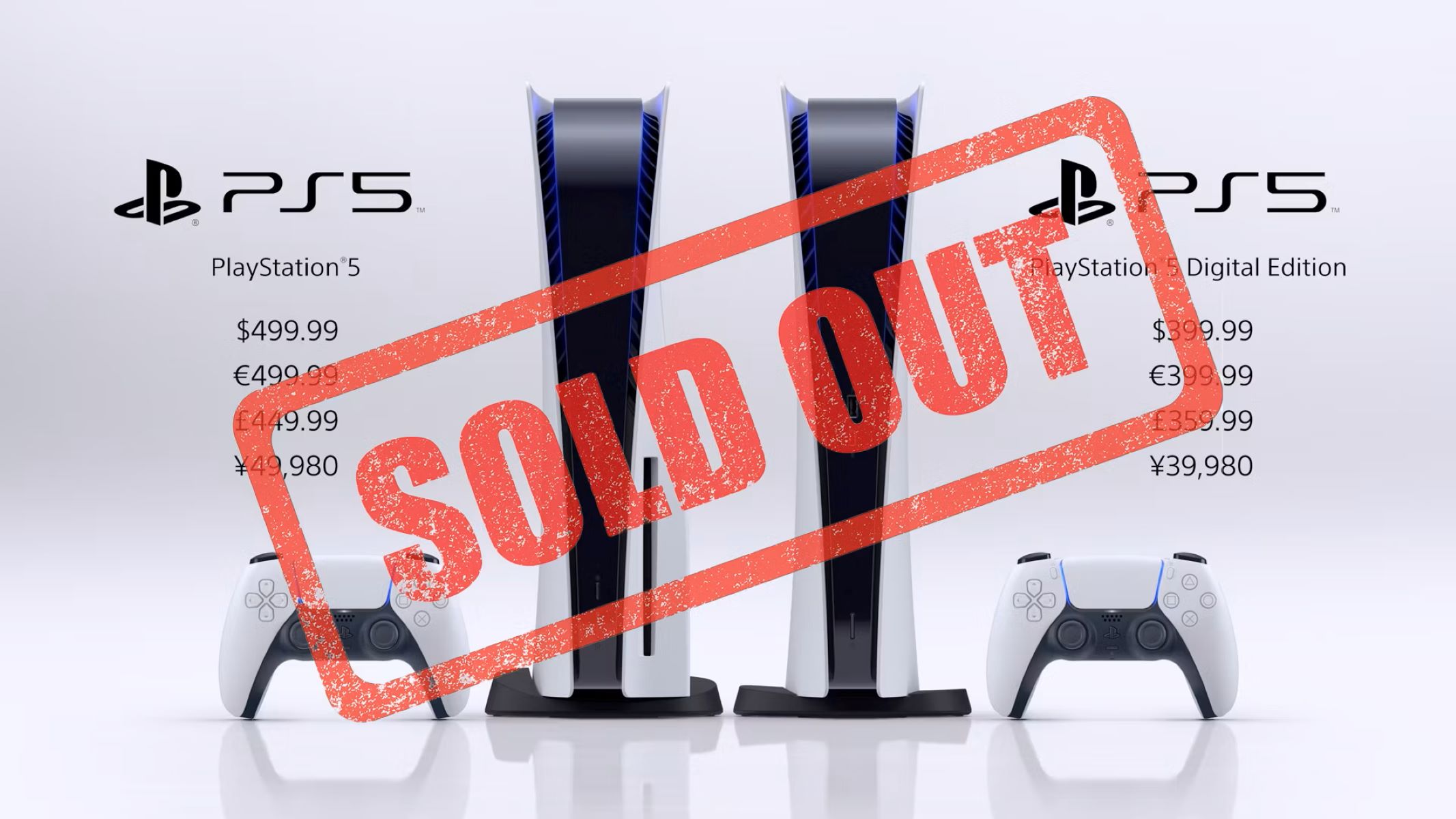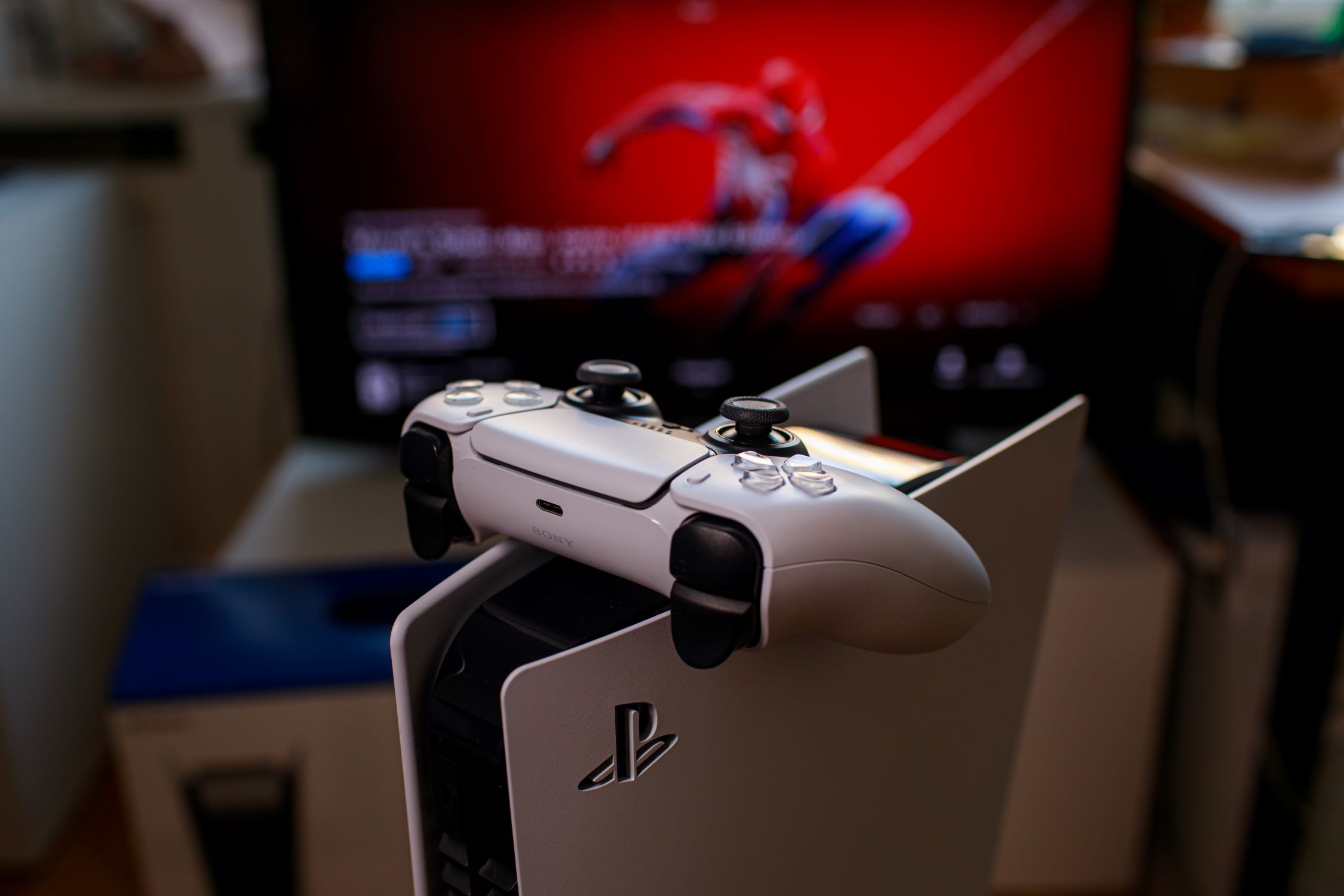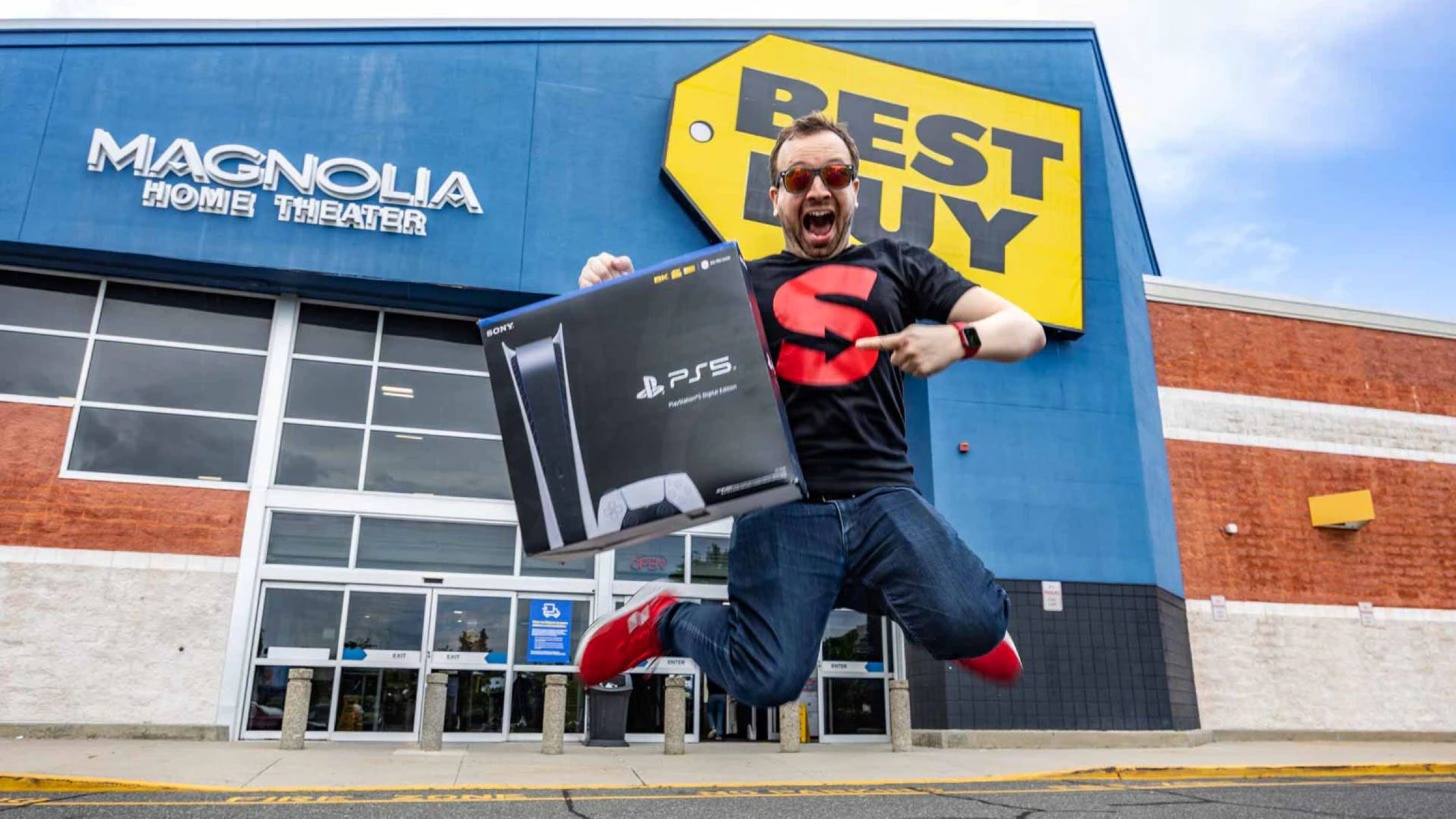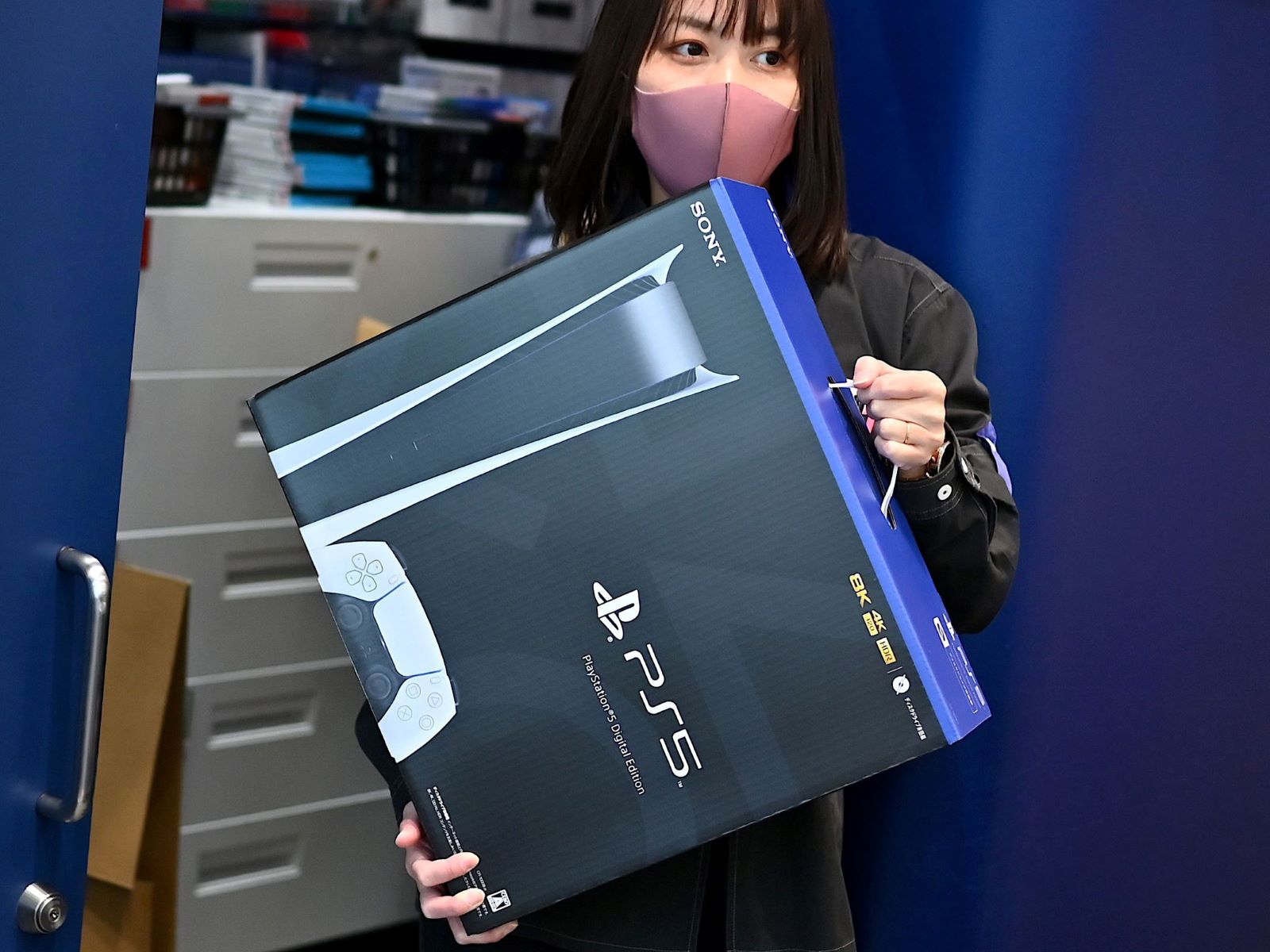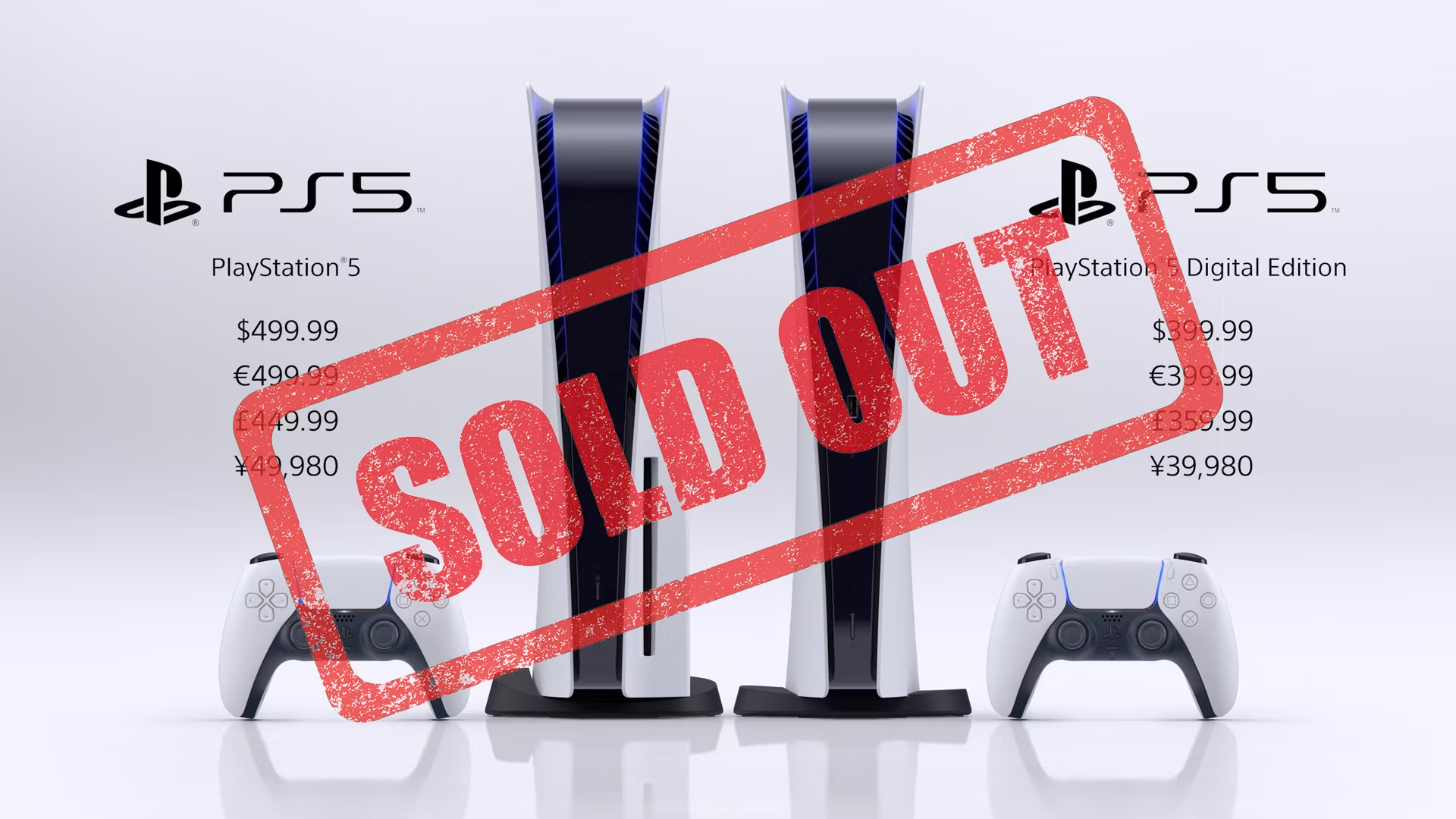Introduction
Welcome to the world of gaming, where the excitement of new releases is often matched by the frustration of supply shortages. And currently, there is one product that has gamers around the globe eagerly searching for answers – the PlayStation 5 (PS5). Since its highly anticipated release in November 2020, the demand for the next-gen console has far exceeded the supply, leaving many gamers empty-handed and wondering, “When will the PS5 shortage end?”
The PlayStation 5, with its cutting-edge features and impressive game library, has taken the gaming community by storm. However, its popularity has led to a shortage that has persisted for months, leaving gamers scrambling to secure their own console. Online retailers, brick-and-mortar stores, and even auctions have been inundated with requests, often resulting in disappointment and frustration for eager gamers who find it nearly impossible to get their hands on a PS5.
As speculation and frustration continue to rise, it’s important to understand the factors contributing to this ongoing shortage. From supply chain challenges to increased demand and production issues, multiple factors have combined to create the perfect storm that keeps the PS5 in scarce supply. In this article, we will explore these factors in-depth and provide insights into when we can expect the PS5 shortage to finally come to an end.
While we understand the frustration that comes with not being able to purchase a PS5, it’s crucial to remember that the gaming industry, like any other, is not immune to challenges. The manufacturing and distribution of a complex product like the PS5 involves various processes and stakeholders, and unforeseen circumstances can disrupt the smooth flow of supply. However, rest assured that efforts are being made to address this issue and get the console into the hands of eager gamers as quickly as possible.
Now, let’s delve into the details and uncover the reasons behind the PS5 shortage.
The Current Situation
The current situation regarding the PS5 shortage can be summed up in one word – frustrating. Despite months passing since its release, the demand for the PlayStation 5 continues to outstrip the available supply. Gamers eagerly searching for the console are met with disappointment as they struggle to find it in stock both online and in physical stores.
Online shopping platforms are constantly bombarded with high traffic from gamers hoping to snag a PS5, resulting in crashed websites, rapid sellouts, and an endless cycle of disappointment. Some individuals have resorted to joining online communities and tracking stock notifications, hoping to catch a window of opportunity when the console is briefly available. However, even with vigilant monitoring, securing a PS5 remains a challenge.
In physical retail stores, the situation is not much better. Limited stocks are quickly depleted as customers line up in the early hours of the morning, hoping to secure their own console. Scalpers, taking advantage of the scarcity, often scoop up multiple units to resell at inflated prices, further exacerbating the problem for genuine gamers.
The frustration extends beyond the gaming community as well. Even those not interested in gaming find it hard to ignore the constant buzz surrounding the PS5 shortage. News outlets and social media platforms are flooded with discussions, memes, and debates about the scarcity of the console. It has become a topic of widespread interest, further fueling the desire to acquire the elusive next-gen gaming experience.
Despite Sony’s efforts to ramp up production and increase supply, the demand for the PS5 shows no signs of slowing down. As more people explore the world of gaming and the hype surrounding the console continues to grow, the competition to secure a PS5 remains fierce.
So, why exactly is the PS5 in such high demand? And what factors have contributed to the current shortage? Let’s dive into these factors in the following sections to gain a better understanding of the situation.
Factors Contributing to the Shortage
The PS5 shortage can be attributed to a combination of factors that have contributed to the ongoing scarcity of the console. Understanding these factors will provide valuable insights into the reasons behind the limited supply and help shed light on when we can expect the shortage to end.
Supply Chain Challenges: The complex supply chain involved in manufacturing and distributing the PS5 is one of the main factors contributing to the shortage. From sourcing raw materials to assembling the components and delivering the final product, each step in the supply chain has faced its own unique challenges. Issues such as factory shutdowns, transportation delays, and disruptions in global logistics have resulted in slower production and limited availability of the console.
Increased Demand and Scalping: The high demand for the PS5 has certainly played a significant role in the shortage. The console’s impressive features, backward compatibility, and exclusive game titles have generated immense excitement and anticipation among gamers. This heightened demand, coupled with the rise of scalping, where individuals purchase multiple units to resell at inflated prices, has further intensified the scarcity of available consoles. Scalpers use bots and advanced online techniques to quickly snatch up stocks, making it even more challenging for genuine buyers to secure a PS5 at its recommended retail price.
Production and Distribution Issues: The production and distribution of the PS5 have been impacted by various issues. The COVID-19 pandemic has disrupted manufacturing processes and caused delays in production timelines. Additionally, the global shortage of semiconductors, due to increased demand and supply chain disruptions, has affected the production of gaming consoles, including the PS5. These issues have created bottlenecks in the production and distribution process, resulting in limited stock reaching retailers and ultimately consumers.
Chip Shortages: As mentioned earlier, the global chip shortage has had a significant impact on the availability of the PS5. Semiconductors and microchips play a crucial role in the functioning of gaming consoles, and the shortage of these components has hampered production capabilities. The increased demand for chips from various industries, including automobiles and consumer electronics, has further exacerbated the shortage. As a result, console manufacturers like Sony have struggled to secure an adequate supply of chips to meet the overwhelming demand for the PS5.
When Can We Expect the Shortage to End?
While it is difficult to provide an exact timeline for when the PS5 shortage will come to an end, there are signs of improvement. As production ramps up and supply chain challenges are addressed, we can expect to see a gradual increase in the availability of the console. Sony and its manufacturing partners are working tirelessly to meet the growing demand and ensure a steady flow of PS5 units into the market.
Efforts are also being made to combat scalping, with platforms implementing measures to prevent bulk purchases and individuals reselling at unfair prices. These actions, combined with increased production and improved supply chain management, offer hope that the shortage will begin to ease in the coming months.
However, it is worth noting that the global chip shortage and other unforeseen circumstances may continue to impact the availability of the PS5 in the short term. It will take time for the production and distribution processes to stabilize fully. Therefore, patience and persistence remain key for those eagerly waiting to get their hands on a PS5.
In the next section, we will explore the signs of improvement and the steps being taken to address the PS5 shortage.
Supply Chain Challenges
The supply chain challenges faced by the gaming industry have played a significant role in the ongoing PS5 shortage. From sourcing raw materials to delivering the final product, each step in the supply chain has experienced its own set of difficulties, contributing to the limited availability of the console.
One of the main challenges in the supply chain has been the impact of the COVID-19 pandemic. The outbreak disrupted global manufacturing processes, causing factory shutdowns and labor shortages. Restrictions on international travel and trade also affected the transportation of components and finished products, resulting in delays and disruptions in the supply chain management. The unpredictable nature of the pandemic has made it difficult for manufacturers to accurately plan and meet the growing demand for the PS5.
In addition to the pandemic, global logistics have been a major hurdle. Shipping and transportation difficulties, including congested ports, limited container availability, and increased freight costs, have hampered the smooth flow of products. Many gaming consoles, including the PS5, are manufactured in Asian countries and then transported to various parts of the world. With these logistical challenges, getting consoles to their intended destinations in a timely manner has proven to be a significant barrier, further exacerbating the shortage.
Complexities within the supply chain have also impacted the production of key components. The PS5, like other gaming consoles, requires a range of specialized components, such as semiconductors, memory chips, and processors. Securing a stable and reliable supply of these components has become a challenge as demand has soared. The global shortage of semiconductors, in particular, has been a major obstacle due to increased demand across industries and supply chain disruptions caused by the pandemic. Limited availability of these critical components has constrained production capabilities and resulted in a shortage of PS5 units reaching the market.
Efforts are being made to address these supply chain challenges and mitigate their impact on the PS5 shortage. Manufacturers, such as Sony, are working closely with their suppliers and partners to streamline production processes, optimize logistics, and overcome the hurdles faced at each stage of the supply chain. Investments are being made to strengthen supply chain resilience, improve forecasting models, and build alternative sourcing strategies to minimize the risk of future disruptions.
Collaboration among stakeholders is another key focus. Manufacturers are cooperating with suppliers, logistics providers, and retailers to identify and address bottlenecks in the supply chain. By fostering open lines of communication and implementing agile solutions, they aim to enhance supply chain visibility, improve inventory management, and reduce lead times. These collaborative efforts are essential for ensuring a steady and adequate supply of PS5 consoles to meet the demand.
While the supply chain challenges may persist for some time, with ongoing efforts and continuous collaboration, the gaming industry is working towards overcoming these obstacles and gradually resolving the PS5 shortage. In the following section, we will explore the effects of increased demand and scalping on the availability of the console.
Increased Demand and Scalping
One of the primary factors contributing to the ongoing shortage of the PS5 is the unprecedented surge in demand. The high demand for the console is driven by a combination of factors, including the anticipation surrounding its release, the allure of new features, and the strong lineup of exclusive games. As a result, the demand has far exceeded the available supply, causing frustration for many gamers.
Unfortunately, the increased demand has also created an environment conducive to scalping – the act of purchasing large quantities of a product with the intent to resell them at inflated prices. Scalpers have taken advantage of the scarcity of PS5 consoles, both online and in-store, by using bots and other automated tools to quickly secure available stock. This practice has made it extremely challenging for genuine buyers to purchase the console at its recommended retail price.
Scalpers often target high-demand products like the PS5, recognizing the potential for substantial profits. By capitalizing on the shortage, they amass large quantities of consoles and then resell them on secondary marketplaces and online auction sites at significantly inflated prices. The exorbitant prices set by these scalpers often put the console out of reach for many consumers, further intensifying the frustration of those seeking to purchase a PS5 at a fair price.
The impact of scalping extends beyond individual consumers. It creates a ripple effect in the marketplace, distorting the supply and demand dynamics. Scalpers not only disrupt the allocation of stock but also disrupt pricing norms, making it difficult for retailers to control the selling price of the PS5. This, in turn, perpetuates the scarcity of the console and the cycle of inflated prices.
In response to the surge in scalping, steps have been taken to curb this practice. Online retailers and auction platforms are implementing measures to deter scalpers, such as implementing anti-bot measures, introducing purchase limits, and cracking down on fraudulent listings. These efforts aim to level the playing field and ensure a fair chance for genuine buyers to purchase the console at its intended price.
Manufacturers and retailers are also exploring different strategies to address the issue of scalping. Some have implemented lottery systems, where interested buyers can register for a chance to purchase a PS5. This approach aims to eliminate the race against bots and provide equal opportunities for all to acquire the console.
While the fight against scalping continues, it is crucial for consumers to exercise caution and avoid supporting scalpers by purchasing from them at inflated prices. By refusing to participate in the inflated secondary market, consumers can send a signal that such practices are not acceptable.
Increased demand and the prevalence of scalping are two significant challenges that have contributed to the ongoing PS5 shortage. However, measures are being taken to combat these issues and ensure fair access to the console for genuine gamers. In the following section, we will explore the production and distribution issues that have further complicated the availability of the PS5.
Production and Distribution Issues
The production and distribution of the PS5 have encountered their fair share of challenges, which have contributed to the ongoing shortage of the console. While manufacturers strive to meet the high demand, various factors have complicated the production and distribution processes, impacting the availability of the PS5 in the market.
The COVID-19 pandemic has been a major disruptor in both production and distribution. Factory closures, reduced workforce capacities, and supply chain disruptions caused by the pandemic have significantly affected the manufacturing timeline of the PS5. Restrictions on travel and international trade have made it difficult to source components and transport finished consoles, leading to delays in production and distribution. These challenges have created a backlog in the supply chain, further exacerbating the shortage.
Another key issue impacting production is the global shortage of semiconductors. Gaming consoles like the PS5 heavily rely on these components, which are also in high demand for various industries, including automotive and consumer electronics. The global chip shortage has made it challenging for manufacturers to procure an adequate supply of semiconductors, hindering the production of gaming consoles. The limited availability of these crucial components has resulted in a shortage of PS5 units reaching retailers and consumers.
Distribution challenges have also contributed to the scarcity of the PS5. With limited production capacity to meet the overwhelming demand, getting consoles to retailers and customers has become a logistical hurdle. The global shipping and transportation sector has experienced setbacks due to congested ports, limited container availability, and increased freight costs. These challenges have slowed down the movement of goods, extending lead times and making it harder for retailers to receive adequate stock of the PS5.
The complexity of producing and distributing a high-demand product like the PS5 is further complicated by the need for quality control and testing. Manufacturers must ensure that each console meets stringent quality standards before it reaches the hands of consumers. This rigorous testing process, combined with the other challenges mentioned, can cause additional delays in the production and distribution of the consoles.
Manufacturers, such as Sony, are actively working to address these production and distribution issues. They are collaborating with suppliers, implementing streamlined processes, and exploring alternative sourcing strategies to improve the availability of the PS5. Efforts are also being made to optimize the logistics and overcome the hurdles in the distribution network to ensure a steady flow of consoles to retailers.
Additionally, the continued vaccination efforts and the gradual return to a more stable post-pandemic environment may help alleviate some of the production and distribution challenges. As global conditions improve, manufacturers will have more opportunities to increase production capacity and streamline distribution processes, potentially leading to a more accessible supply of the PS5 in the future.
Despite the production and distribution issues, manufacturers are committed to meeting the demand for the PS5 and ensuring that as many gamers as possible can experience the next-gen console. However, it’s important for consumers to remain patient and understanding as these challenges are addressed and the Sony team works diligently to ramp up production and improve distribution logistics.
In the next section, we will explore when we can expect the PS5 shortage to end and any signs of improvement in the situation.
Chip Shortages
One of the major obstacles contributing to the ongoing PS5 shortage is the global shortage of semiconductors, commonly known as chip shortages. Semiconductors are crucial components used in a wide range of electronic devices, including gaming consoles like the PS5. The high demand for semiconductors coupled with supply chain disruptions has led to a scarcity of these essential components, impacting the production and availability of the PS5.
The chip shortage can be attributed to a combination of factors. Firstly, the COVID-19 pandemic disrupted global supply chains, leading to production delays and factory closures. The closure of manufacturing facilities, particularly in regions heavily involved in semiconductor production, created a bottleneck in the supply chain. As the demand for consumer electronics, such as gaming consoles and smartphones, increased during the pandemic, the available semiconductor production capacity struggled to keep up.
Furthermore, the pandemic also caused a shift in consumer behavior, resulting in an increased demand for electronic devices. As individuals worldwide spent more time at home, there was a surge in the adoption of remote work, online learning, and entertainment. This heightened demand, coupled with the release of next-gen gaming consoles like the PS5, put additional strain on semiconductor supplies, exacerbating the shortage.
Another contributing factor to chip shortages is the dynamic nature of the semiconductor industry. The production of semiconductors requires highly specialized manufacturing processes and facilities. The long lead times required to establish new semiconductor fabrication plants, known as fabs, mean that increasing production capacity to meet sudden spikes in demand can be challenging. As a result, semiconductor manufacturers face difficulties rapidly scaling up production to match the growing demand for their products.
The global chip shortage has affected several industries, including automotive, consumer electronics, and gaming. Multiple companies across different sectors have been impacted, leading to increased competition for a limited supply of semiconductors. The gaming industry, in particular, has been affected, with gaming console manufacturers struggling to secure an adequate supply of semiconductors for production.
Manufacturers like Sony have been actively working to mitigate the impact of the chip shortage on PS5 production. They have been collaborating with semiconductor suppliers, leveraging relationships with foundries, and exploring alternative sourcing strategies to increase the availability of these vital components.
While efforts are being made to address the chip shortages, it may take some time for the situation to stabilize. The supply of semiconductors is expected to gradually improve as production capacity increases and global supply chains recover from the disruptions caused by the pandemic. However, the timeline for a complete resolution of the chip shortage remains uncertain.
Overall, the chip shortage is a significant factor contributing to the ongoing PS5 shortage. As semiconductor supplies become more readily available and production capacity increases, we can expect improvements in the availability of the PS5. However, consumers may need to exercise patience as chip shortages continue to impact the gaming industry and other sectors reliant on semiconductors.
In the next section, we will discuss when we can expect the PS5 shortage to end and any signs of improvement in the situation.
When Can We Expect the Shortage to End?
The burning question on the minds of many gamers is, “When can we expect the PS5 shortage to finally come to an end?” While it’s challenging to provide an exact timeline, there are signs of improvement and reason to be cautiously optimistic.
Manufacturers, such as Sony, have been working diligently to increase production capacity and address the supply chain challenges that have contributed to the shortage. Production of the PS5 has been ramping up, allowing for a higher volume of consoles to enter the market. Additionally, efforts are being made to optimize the logistics of distribution, ensuring a more efficient flow of consoles from production facilities to retailers.
While production is increasing, it’s likely that the availability of the PS5 will gradually improve rather than experience a sudden surge. Manufacturers need to carefully balance production capabilities with demand and ensure the quality of each console before it reaches the market. Therefore, consumers may still need to exercise patience even as production capacity scales up.
The ongoing global chip shortage presents an additional challenge to ending the PS5 shortage completely. Semiconductor supplies are expected to improve as production capacity expands and supply chains recover from the disruptions caused by the pandemic. However, chip shortages are complex issues that affect multiple industries, and it may take time for the situation to stabilize fully.
Despite these challenges, there have been positive signs indicating a potential improvement in the PS5 shortage. Retailers have been able to restock their inventory more frequently compared to earlier in the console’s release. While the restocks may still get quickly sold out due to the high demand, the increased frequency suggests a positive trend. It is an indication that manufacturers are making progress in meeting the demand for the console.
Furthermore, efforts are being made to address the issue of scalping. Online platforms and retailers have implemented measures to combat automated purchasing by bots and restrict bulk purchasing. By curbing scalping activities, more genuine customers have a fair chance to purchase the PS5 at its recommended retail price.
Ultimately, it’s important to keep an eye on announcements from the manufacturers and retailers for updates on the availability of the PS5. They will provide insights into production increases and any strategies being implemented to address the shortage.
While it is challenging to pinpoint an exact date for the end of the PS5 shortage, the combined efforts of manufacturers, improvements in production capacity, and the gradual resolution of chip shortages provide hope for a brighter outlook in the near future. Patience and persistence will be key for gamers eagerly waiting to secure their own PS5 console.
In the upcoming section, we will explore the efforts being made to address the shortage and any initiatives aimed at resolving the issue.
Signs of Improvement
Amidst the ongoing PS5 shortage, there are promising signs of improvement that indicate a gradual resolution to the scarcity of the console. While the shortage is not expected to end abruptly, these signs offer hope to gamers eagerly awaiting the opportunity to purchase a PS5.
One significant indicator of progress is the increased frequency of restocks. Retailers have been able to replenish their inventory more frequently compared to the earlier stages of the console’s release. Although these restocks often sell out rapidly due to the high demand, the more frequent availability suggests that manufacturers are making strides in increasing production output and improving supply chain management.
Moreover, as manufacturers continue to optimize their production processes and address supply chain challenges, there have been reports of larger shipments of PS5 units being sent to retailers. This signifies that the manufacturing capabilities are scaling up, allowing for a greater number of consoles to enter the market. The larger shipments also indicate that manufacturers are gaining more confidence in meeting the demand and are dedicating resources to ensure a more steady supply of the PS5.
Another positive development is the manufacturers’ commitment to transparency. Companies like Sony have been providing regular updates on the production progress, distribution plans, and their efforts to address the supply shortage. This transparent communication not only helps manage customer expectations but also showcases a dedication to resolving the issue and meeting the demand for the console.
Efforts to combat scalping activities, which have significantly contributed to the PS5 shortage, have also shown signs of progress. Online retailers and platforms have implemented measures to curb scalping, including anti-bot measures, purchase limits, and stricter account verification. While it may not completely eliminate scalping, these steps aim to level the playing field, ensuring a fair opportunity for genuine customers to purchase the console at its intended retail price.
Furthermore, governmental bodies and consumer advocacy groups have been actively involved in raising awareness about the issue of scalping. This attention has garnered support and put pressure on retailers to take action against scalpers, leading to more concerted efforts to address the problem. Cooperation between various stakeholders is crucial in tackling scalping and ensuring fair access to the PS5 for all gamers.
Overall, these signs of improvement, such as increased restocks, larger shipments to retailers, transparent communication, and actions taken against scalping, indicate that progress is being made towards resolving the PS5 shortage. While it may still take time for the shortage to completely dissipate, these positive developments bring hope that the availability of the PS5 will gradually improve, allowing more gamers to finally get their hands on the highly sought-after console.
In the final section of this article, we will explore the ongoing efforts being made to address the shortage and any initiatives aimed at resolving the issue.
Efforts to Address the Situation
The gaming industry, along with manufacturers, retailers, and various stakeholders, is actively working to address the ongoing PS5 shortage. Recognizing the frustration experienced by gamers and the demand for the console, concerted efforts are being made to improve the availability of the PS5 and ensure a fair and accessible purchasing experience.
One major area of focus is increasing production capacity. Manufacturers, such as Sony, have been investing in scaling up production capabilities to meet the overwhelming demand for the PS5. They are working closely with their suppliers, optimizing manufacturing processes, and exploring alternative sourcing strategies for crucial components. By increasing production output, these efforts aim to alleviate the shortage and enable more gamers to obtain the console.
In addition to production, supply chain optimization is another important aspect being addressed. Manufacturers are collaborating with their partners and suppliers to streamline supply chain operations. By enhancing communication and coordination, they aim to overcome challenges such as transportation delays and disruptions that have contributed to the shortage. These efforts are key to ensuring a smoother flow of PS5 units from production facilities to retailers and ultimately to consumers.
Ensuring fairness in the purchasing process is also a priority. Online platforms and retailers have taken steps to combat scalping activities and prevent automated bulk purchasing. Anti-bot measures, purchase limits, and account verification procedures have been implemented to create a more level playing field for genuine customers. These measures aim to discourage scalpers and provide equal opportunities for gamers to purchase the console at its intended retail price.
Governmental bodies and consumer advocacy groups have also joined the fight against scalping. They have been raising awareness about the issue and pressuring retailers to take action. This collective effort creates a stronger stance against unethical practices and sends a clear message that scalping is not tolerated. Collaboration between industry stakeholders, government bodies, and consumer organizations is crucial in curbing scalping activities and ensuring fair access to the PS5.
Manufacturers, retailers, and online platforms have recognized the importance of transparent communication. Regular updates on production progress, restock schedules, and steps taken to address the shortage have been provided to the public. This transparency helps manage customer expectations and fosters trust between companies and their consumer base.
Engaging with the gaming community is another essential aspect of addressing the situation. Listening to customer feedback and understanding their concerns allows manufacturers and retailers to make informed decisions and implement necessary changes. Open lines of communication through social media, forums, and customer support channels help to address queries and keep consumers informed about upcoming restocks and availability.
Overall, the ongoing efforts being made to address the PS5 shortage demonstrate the commitment of the gaming industry and its stakeholders to resolve the issue. Through increased production capacity, supply chain optimization, measures against scalping, transparent communication, and community engagement, a comprehensive approach is being adopted to improve the availability of the console and provide a fair purchasing experience for gamers.
In the final section of this article, we will summarize the information discussed and conclude on the topic of the PS5 shortage.
Conclusion
The ongoing PS5 shortage has been a source of frustration for gamers around the globe. The overwhelming demand, coupled with various factors such as supply chain challenges, increased demand and scalping, production and distribution issues, and chip shortages, has contributed to the scarcity of the console.
Despite these challenges, there are signs of improvement. Manufacturers have been increasing production capacity, optimizing supply chain operations, and addressing the issue of scalping. Retailers have been receiving more frequent restocks, larger shipments of PS5 units, and implementing measures to prevent automated bulk purchases. Transparent communication and community engagement have also played a vital role in managing customer expectations and addressing concerns.
However, it is important to remain patient as the resolution of the shortage will be a gradual process. The global chip shortage and other unforeseen circumstances may continue to impact availability in the short term. The gaming industry, alongside manufacturers and retailers, is committed to addressing the shortage and ensuring a fair and accessible purchasing experience for gamers.
If you are still in search of a PS5, it is recommended to stay informed about restock announcements from retailers and manufacturers, consider alternative purchasing options, and avoid supporting scalpers by purchasing at inflated prices.
In the ever-evolving landscape of gaming, where excitement and anticipation often mingle with challenges, the PS5 shortage serves as a reminder of the complexities inherent in the production and distribution of high-demand products. Through perseverance, collaboration, and ongoing efforts to address the situation, it is expected that the availability of the PS5 will gradually improve, allowing more gamers to embark on the next-generation gaming experience they have eagerly been waiting for.









